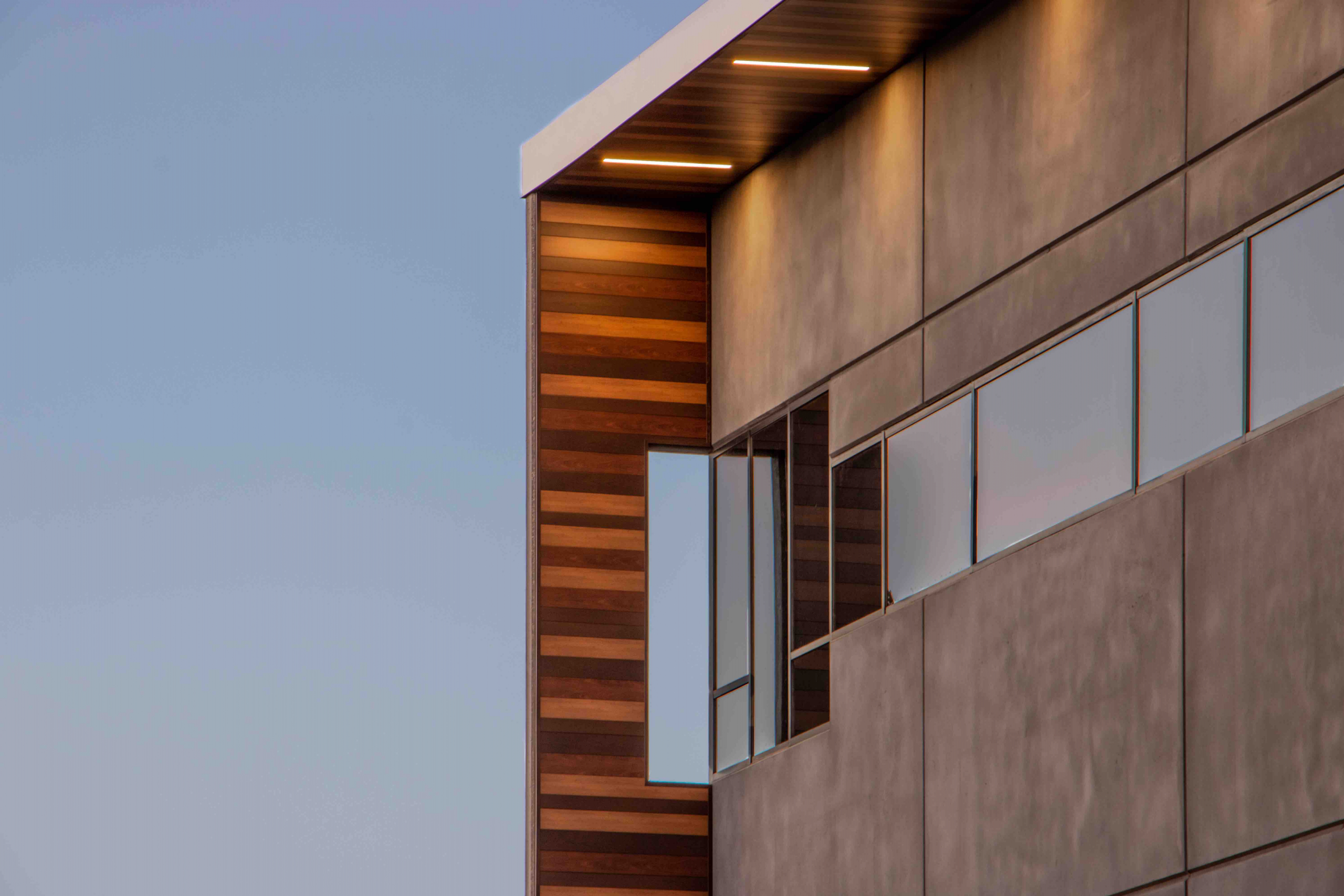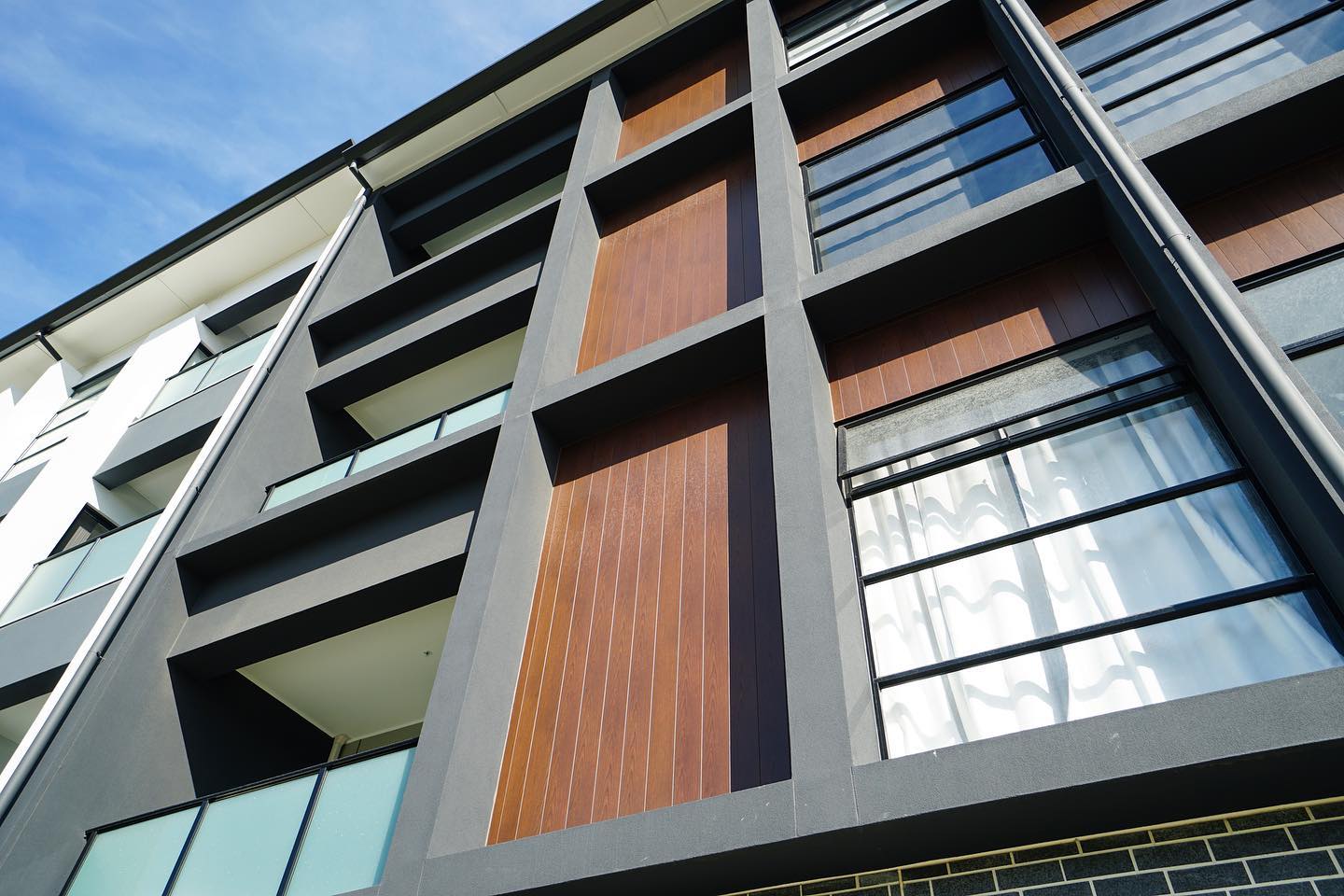Advantages of aluminium cladding over timber
Architects are increasingly specifying aluminium cladding over timber cladding materials, due to its striking aesthetics; improved functionality; better safety credentials; and a more sustainable offering for cladding projects.
Knotwood are pleased to supply a range of timber-effect aluminium cladding, that provide the beauty of a timber-look finish but with the functionality and performance benefits of aluminium. It is non-combustible, lightweight, robust, and long-lasting.
For specification guidance and product samples, contact our team today.

What are the advantages of aluminium cladding over timber?
Timber was historically a popular choice for cladding on buildings when looking for a design-led alternative to concrete and brick. Its textured appearance and earthy appeal that bring to mind Swiss chalets and rural chic were replicated in many different types of building.
With changes to building regulations however, and questions over the longevity and maintenance of timber cladding, timber soon started to make way for more contemporary alternatives. But that didn’t alter the popularity of a wood-effect finish, which brings a more natural and sensitive aesthetic appeal to buildings.
Aluminium cladding can now do it all. It is a high performance cladding material that can provide the sought-after wood-effect finish, without the concerns of timber.
Here are the main advantages of aluminium cladding over timber:
- Aluminium is non-combustible so doesn’t cause concern in terms of fire resistance or performance. Our aluminium cladding panels are fire rated to A2-s1-d0. Timber cladding on the other hand is a fire risk. While timber can be treated to improve its fire resistance, its fire performance can never be guaranteed, and it can no longer meet fire safety regulations when it comes to cladding. Knotwood aluminium cladding complies with all relevant fire safety regulations.
- Aluminium cladding from Knotwood is quickly installed by simply interlocking the boards and clipping them together. The installation of timber cladding requires the skills of expert technicians who are fully trained in erecting timber cladding. If timber cladding is installed by less skilled contractors, it will not only look substandard, there is also the chance of staining from the fixings.
- Aluminium cladding requires very little ongoing maintenance. Knotwood aluminium cladding features a powder coated woodgrain effect finish (thanks to the latest technology we use in sublimation and photographic film) with outstanding properties, that ensures ease of maintenance and the longevity of surfaces. Timber cladding requires regular ongoing maintenance such as painting, oiling, or staining to maintain its performance. This takes time and incurs cost for the owners of the building.
- Aluminium is lightweight, yet strong and durable, so contractors find it easy to work with. The weight of timber makes it difficult to work with and may rule it out for some applications.
- Aluminium cladding is straighter and stronger than timber and will not warp or deteriorate over time. When exposed to the elements, timber cladding can warp or crack. An aluminium cladding installation is for the long term. Designers and architects are reassured that their designs will stand the test of time.
- Aluminium doesn’t corrode, swell or grow mould or algae. Whereas timber cladding can swell and grow mould and algae over time when exposed to wet conditions. Knotwood aluminium wood-effect cladding has passed rigorous CWCT testing (Centre for Window and Cladding Technology) for its high performance levels in wind resistance and watertightness.
Knotwood aluminium cladding is highly versatile, offering incredible customisation. Our cladding systems made up of seamless, flexible and easy to install profiles that provide designers with many options for developing innovative cladding concepts. The options for different applications of timber cladding is limited due to its lack of malleability and inflexible installation process.

Fire rating benefits of aluminium cladding
The fire rating of cladding is a key issue when specifying materials for build projects.
Knotwood aluminium wood effect cladding is fire rated to A2-s1-d0 and as a resut is classed as non-combustible. Architects, main contractors and developers can specify our aluminium cladding panels can be assured they are using a high performance cladding solution for commercial or residential building applications over 11m in height, or any project where an A2 fire rating is required by law.
By comparison, most untreated timber cladding systems have a D rating which means it is classified as potentially making a ‘medium contribution to fire’.
Rather than spreading fire, aluminium cladding prevents flames from rapidly spreading across the building’s surface. The powder coating will only char when exposed to fire.
Knotwood premium wood-effect aluminium cladding
Specifying Knotwood premium wood-effect aluminium cladding gives architects and designers the peace of mind that they are selecting a product that complies with international fire safety standards, yet offers a beautiful, natural wood-effect finish.
Available in a range of stock colours, the outcome of a Knotwood premium wood-effect aluminium cladding installation is a high-end finish that enhances the appearance of any building. Knotwood aluminium cladding can be installed both internally and externally to create a stunning external building envelope or innovative internal feature.
The colour stability of Knotwood’s wood-effect finish has been thoroughly tested and confirmed as being able to withstand the most extreme weather conditions without its appearance being compromised.
FAQs
Is Knotwood aluminium cladding eco-friendly?
Yes. Knotwood only uses VOC-free (volatile organic compounds) coatings and lead free finishes. It is also 100% recyclable at the end of its lifespan.
Can the appearance of Knotwood be damaged due to scratching?
No. A topcoat of exterior grade paint is applied to Knotwood cladding to make it resistant to chipping, flaking, blistering and scratching.
Can I organise a consultation for my project?
Yes, we’d be delighted to hear from you. Get in touch using our online form or by calling 0800 131 3165.
